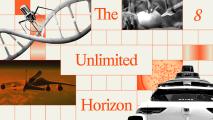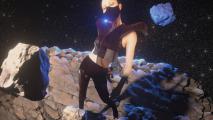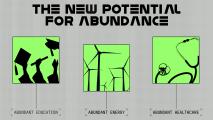To transition the electric grid from fossil fuels to renewables, we need better energy storage systems — and a battery made from crab shells could help make it happen.
The challenge: Electricity production is responsible for 25% of US greenhouse gas emissions, so transitioning away from fossil fuels towards clean sources of electricity, such as wind and solar, is a vital part of combating climate change.
We also need to radically scale up the grid to help the transportation sector (another 28% of US emissions) transition to electric vehicles.
Energy storage systems could help address renewables’ reliability problem.
While the average cost of renewable power is now competitive with fossil fuels, these sources aren’t as reliable — you can burn gas any time, but you can’t force the wind to blow or the sun to shine — and we can’t have an electric grid that only produces electricity when the weather cooperates.
Energy storage systems: Storing extra renewable energy in batteries when the supply is high for use when it isn’t can help address the reliability problem.
Some solar and wind farms already do this with banks of lithium-ion batteries — the kind used in EVs, laptops, and other tech — but while these batteries have a high energy density and long life, they’re also expensive and can catch fire, which makes them less-than-ideal as renewable energy storage systems.
The alternative: Zinc-ion batteries are one attractive alternative, as they’re more stable, and zinc is far cheaper and more abundant than lithium. The problem is that they don’t have a very long life.
“[D]uring charge-discharge cycling, zinc tends to grow as random and spiky crystals — called dendrites — which can easily cause a short-circuit when charging batteries,” said Linda Nazar, a chemistry professor at the University of Waterloo and co-lead author of a 2022 study on zinc-ion batteries.
What’s new? Researchers from the University of Maryland (UMD) have discovered that a chemical found in the shells of crabs, called “chitosan,” can help inhibit the growth of dendrites when incorporated into a zinc-ion battery’s electrolyte (the substance that helps transport ions during charging and discharging).
While traditional rechargeable zinc-ion batteries can only operate for a few days or maybe a week at full capacity, UMD researcher Lin Xu told the Baltimore Sun his team’s battery would still be 70% efficient after a year, making it a viable option for renewable energy storage systems.
Looking ahead: The chitosan battery UMD made for its study was only about the size of a coin, but Xu says the design could be scaled up. If that happens, the seafood-boosted batteries could one day play an important role in decarbonizing the electric grid.
However, zinc-ion batteries, whether made from crab shells or other materials, are just one potential solution to renewable energy’s storage problem.
Other groups are exploring the potential of batteries made of sand, salt, sulfur, and more as energy storage systems, and it’ll likely be some combination of these technologies that finally allows us to fully decarbonize the electric grid.
“There is no one winner,” said Adarsh Nagarajan, a researcher at the DOE’s National Renewable Energy Laboratory who works extensively on the integration of renewables into the electric grid. “All of them should work together in order to achieve a certain goal, which is grid stability and resilience and to fulfill customer needs.”
We’d love to hear from you! If you have a comment about this article or if you have a tip for a future Freethink story, please email us at [email protected].






